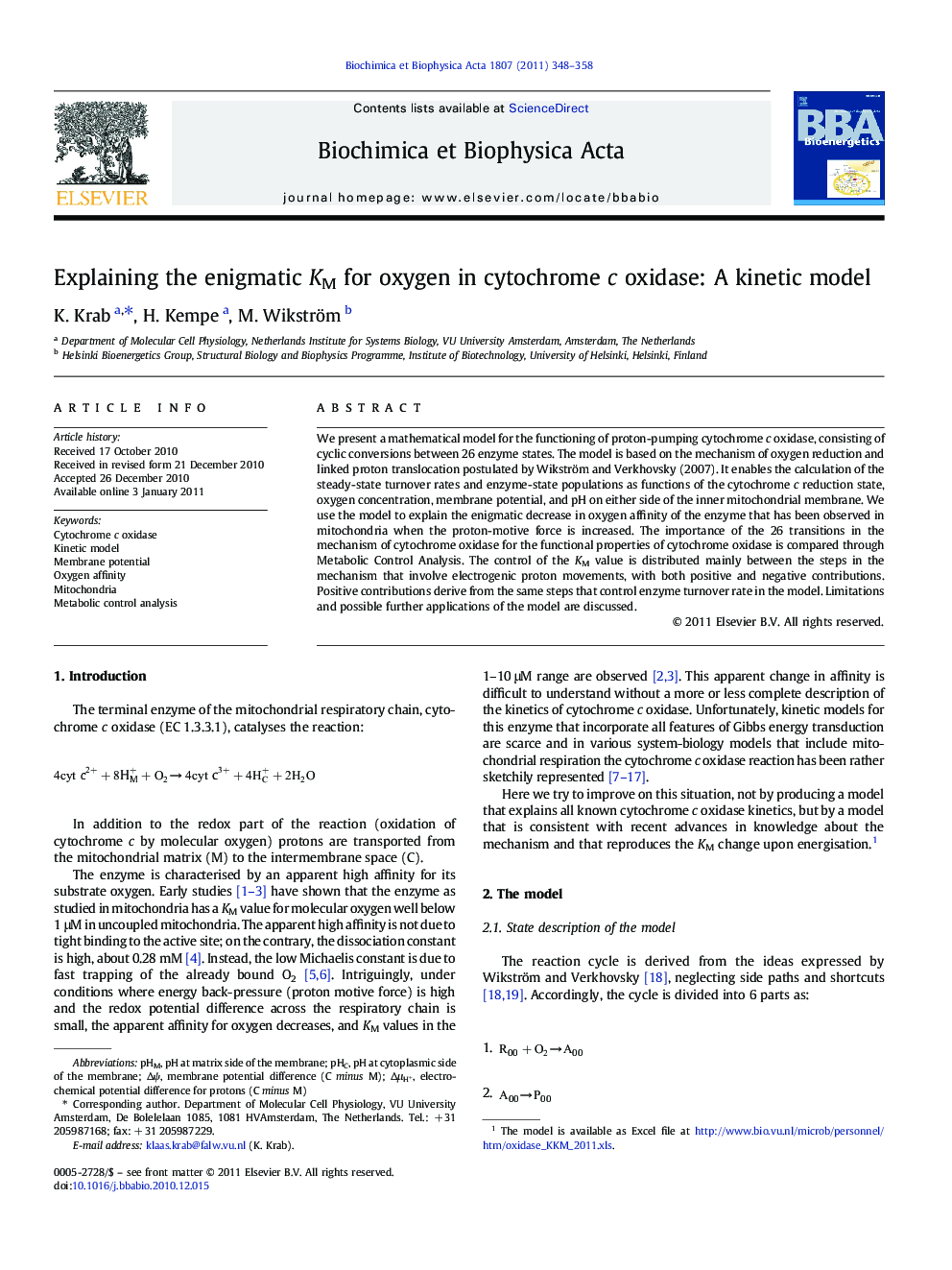| Article ID | Journal | Published Year | Pages | File Type |
|---|---|---|---|---|
| 1942802 | Biochimica et Biophysica Acta (BBA) - Bioenergetics | 2011 | 11 Pages |
We present a mathematical model for the functioning of proton-pumping cytochrome c oxidase, consisting of cyclic conversions between 26 enzyme states. The model is based on the mechanism of oxygen reduction and linked proton translocation postulated by Wikström and Verkhovsky (2007). It enables the calculation of the steady-state turnover rates and enzyme-state populations as functions of the cytochrome c reduction state, oxygen concentration, membrane potential, and pH on either side of the inner mitochondrial membrane. We use the model to explain the enigmatic decrease in oxygen affinity of the enzyme that has been observed in mitochondria when the proton-motive force is increased. The importance of the 26 transitions in the mechanism of cytochrome oxidase for the functional properties of cytochrome oxidase is compared through Metabolic Control Analysis. The control of the KM value is distributed mainly between the steps in the mechanism that involve electrogenic proton movements, with both positive and negative contributions. Positive contributions derive from the same steps that control enzyme turnover rate in the model. Limitations and possible further applications of the model are discussed.
Research Highlights► A kinetic model for cytochrome oxidase including proton translocation is given. ► The increased KM for oxygen observed at high protonmotive force is explained. ► The control distribution of turnover, Vmax and KM for O2 between reaction steps is quantified. ► Electrogenic H+ movements dominate control of turnover, Vmax and KM.
